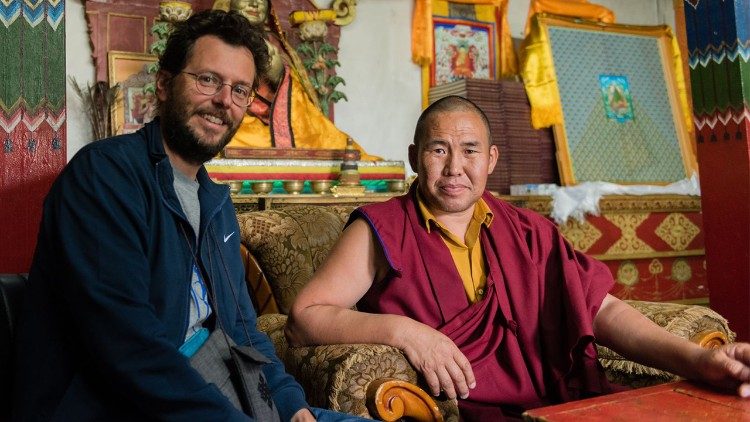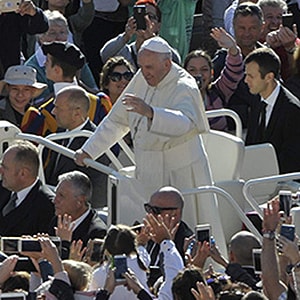
Holy See and Mongolia: 30 years of good relations
By Amedeo Lomonaco & Linda Bordoni
The Buddhist delegation from Mongolia is engaged in an intense schedule of meetings and appointments in the Vatican spanning Friday and Saturday as it marks 30 years from the establishment of diplomatic relations between the Holy See and Mongolia as well as 30 years of the Catholic Church’s presence in the country.
On Friday morning the delegation was received by the Pontifical Council for Interreligious Dialogue, while in the afternoon members visited the Vatican Museums. The highlight on Saturday is undoubtedly the scheduled audience with Pope Francis.
Speaking to Vatican Radio, Father Giorgio Marengo the head of the apostolic prefecture of Ulaanbataar, described the visit as an important step for interreligious dialogue.
“We are very happy with this event, which we have been working on for almost two years with the great cooperation, the great support, of the Pontifical Council for Interreligious Dialogue,” father Marengo said noting that there have in fact been visits to the Vatican by other prominent figures of Mongolian Buddhism, but “they were unofficial visits.”
This is the first time, he explained, that a delegation is coming to meet the Holy Father, “so it is an important chapter of interreligious dialogue, to which the Church pays much attention in Mongolia.”
The Catholic Church’s presence in Mongolia
There are about 1,400 Catholics in the central Asian country that hosts 8 parishes. Father Marengo describes the reality and says “We like this image of a Church that resembles that of the Acts of the Apostles.”
“There are few countries in the world where Christians who are members of our communities are first or second generation. It is an adventure of the Spirit and of great missionary enthusiasm, which had as its protagonist, for at least two of these decades, the late Bishop Wenceslaus Padilla, who was the real founder of this Church,” he said.
Father Marengo went on to explain that the first decade was marked by the evangelizing work of a first group of missionaries in the aftermath of the end of the communist regime, which had heavily conditioned religious freedom in the country.
“The first decade was marked by these small but very significant steps, especially in the field of human promotion,” he said.
The second decade, Father Marengo described as one of establishment and birth of the first Christian communities and the beginning of some faith journeys by the local population.
The third decade, he continued, is symbolized by the ordination of the first Mongolian priest, in 2016, “and we carry this image as a great gift of the Spirit for this nascent Church.”
Along with him, today, the apostolic prefect added, we have a second local priest, who was ordained in October last year.
Diplomatic relations
As mentioned, this official visit marks the 30th anniversary of the establishment of diplomatic relations between the Holy See and Ulaanbaatar.
These fruitful years, Father Marengo said, have been marked by an increase in positive dialogue and cooperation “which we hope will result in concrete steps that will consolidate the legal status of the Church in Mongolia, as well as acknowledge and affirm mutual cooperation.”
The main challenges
Mongolia is a nation that stretches between imposing mountain ranges in the north and arid expanses in the south. Thirty percent of the population is nomadic. The pastoral challenges in such a territory where only about 1,400 people are baptized out of a total population of over 3 million are remarkable.
“I have tried to summarize what the pastoral priorities may be in the letter I shared with Mongolian missionaries and faithful,” Father Marengo said, highlighting, first of all, the challenge of helping people who have taken this very important step to deepen their faith and make it more and more connected to everyday life.
A second aspect regards the challenge of communion and fraternity, “both among us missionaries from various congregations” and among the Christian communities themselves, Father Marengo said.
“Although we are few in number, we increasingly feel the need to be ‘in tune’ on the paths of the Gospel, aware also that fellowship is a sign of the Lord's presence among us.
A third aspect, he concluded, is the proclamation and witness that must mark this Church that for the most part is going forth outwards
Thank you for reading our article. You can keep up-to-date by subscribing to our daily newsletter. Just click here







